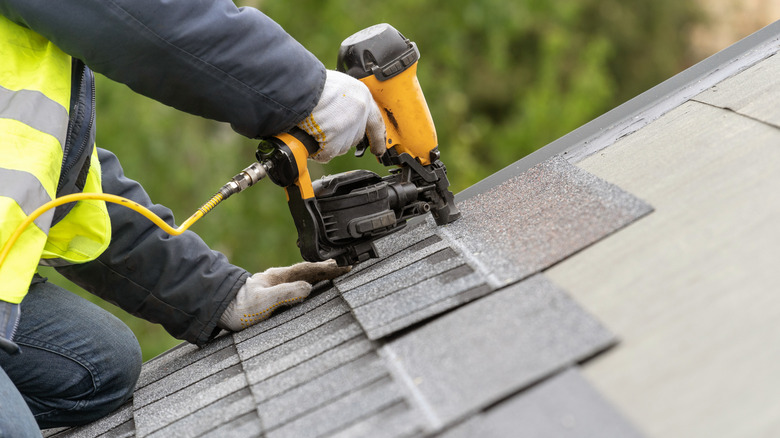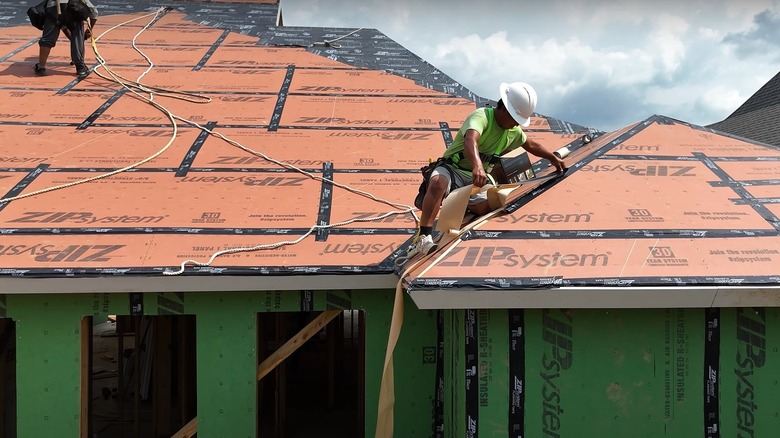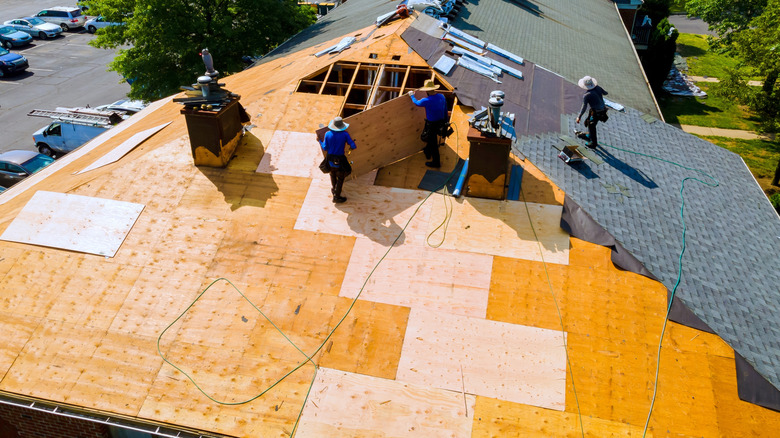What Is A Fortified Roof And How To Know If You Have One
With the rise in adverse weather in recent years, it has become necessary for homeowners to pick the best roof to protect their homes and property. This is why the Insurance Institute for Business and Home Safety (IBHS) developed the Fortified roof system to tackle damage and leakage issues caused by hurricanes, winds, and hailstorms. Unlike standard roofs, which meet only basic building codes, Fortified roofs follow stricter engineering standards and require specialized installation. They use materials like impact-resistant shingles, stronger decking, special underlayment, and other details designed to improve a roof's integrity.
The biggest benefit of a Fortified roof is obvious: protection. Homeowners in storm-prone areas can sleep easier knowing their roof is far less likely to peel off during high winds or cave in due to leaks or hailstones. These roofs reduce the risk of property damage due to leaks and other monetary losses you might incur during extreme weather. Having a Fortified roof also helps encourage fewer repairs and a long-lasting roof that will add value to your home. Plus, you could save money as many insurance companies offer discounts and other benefits to homeowners with a Fortified roof.
However, a Fortified roof still has its drawbacks. It comes with high initial costs and limited design options because of complex installation and the need for partial or total roof replacement to meet the standard. Older homes might need reinforcements to support the heavier roofing materials. In some cases, the discounts offered by insurance companies don't make up for the high initial investments required.
How do you know if you have a Fortified roof?
In terms of appearance, there are no major differences between standard roofs and their Fortified counterparts. The easiest and most trustworthy way to confirm your roof is Fortified is with the official designation and certificate from the IBHS issued to homes that meet the requirements. They should come with your other house documents, as they are issued during construction. If you can't find the certificate, it could either be a question to ask your roofing contractor or send an email to IBHS for a duplicate. Requesting this document is an important question you should ask your home inspector or the previous owners before buying a home. When you have the document, look out for where Fortified standards are mentioned.
You or a hired expert can also inspect the roof for key elements and materials that comply with the standards set by IBHS. These elements include ring-shank nails that provide extra grip for the shingles, and a secondary water barrier seal on the roof deck. However, the impact-resistant shingles and wider drip edges would likely be even more visible aspects of a Fortified roof. Even if you see these details, we'd still advise you to request the IBHS certificate to be absolutely certain of your roof's status.
Is a Fortified roof worth the investment?
If you realize your roof isn't Fortified, the next big question is whether it needs it to be. While the perks are tempting, the costs involved will certainly have you thinking twice. But remember that the whole point of a Fortified roof is improved protection against damage caused by severe weather conditions. Some people maintain that this roofing system isn't a luxury but a necessity in areas prone to severe weather conditions like hurricanes, heavy rains, or tropical storms. In the United States, these include southeast regions such as Florida, the Carolinas, and Georgia. But if you're in a mild-weather area, like Washington D.C. — that rarely sees more than a thunderstorm or light snow — the investment might be overkill.
It's also worth considering the long-term savings compared to the overall costs of the investment. A Fortified roof can bring your total roofing spend to about $1,000 to $3,000 for a 2,000-square-foot home. But on the flip side, you have access to insurance discounts, may become eligible for financial aid in certain areas, and the reinforcement will improve your roof's lifespan by at least a decade over standard roofing, reducing the need for maintenance. If your roof is due for replacement anyway, opting for a Fortified roof might not be such a bad idea. There's also the resale angle: Simply listing a Fortified roof as one of your home's features may boost its appeal and value to potential buyers, particularly with new homes.


